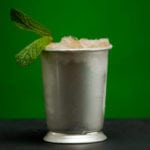 Mysteries
Mysteries  Mysteries
Mysteries  History
History 10 Surprising Stories About the Texas Rangers
 Humans
Humans 10 Philosophers Who Were Driven Mad by Their Own Theories
 Miscellaneous
Miscellaneous 10 Video-Game-Worthy Weapons and Armors from History
 Weird Stuff
Weird Stuff 10 Psychics Who Accurately Predicted Wartime Events
 The Arts
The Arts 10 Pieces of Art Inspired by a Broken Heart
 Health
Health 10 Science Fiction-Sounding New Medical Treatments
 History
History 10 Surprising Facts About the Father of Submarine Warfare
 Space
Space Ten Astonishing New Insights into Alien Worlds
 Weird Stuff
Weird Stuff 10 Bizarre Summer Solstice Rituals Still Practiced Today
 Mysteries
Mysteries Top 10 Haunting Facts About the Ghost Ship MV Alta
 History
History 10 Surprising Stories About the Texas Rangers
 Humans
Humans 10 Philosophers Who Were Driven Mad by Their Own Theories
Who's Behind Listverse?

Jamie Frater
Head Editor
Jamie founded Listverse due to an insatiable desire to share fascinating, obscure, and bizarre facts. He has been a guest speaker on numerous national radio and television stations and is a five time published author.
More About Us Miscellaneous
Miscellaneous 10 Video-Game-Worthy Weapons and Armors from History
 Weird Stuff
Weird Stuff 10 Psychics Who Accurately Predicted Wartime Events
 The Arts
The Arts 10 Pieces of Art Inspired by a Broken Heart
 Health
Health 10 Science Fiction-Sounding New Medical Treatments
 History
History 10 Surprising Facts About the Father of Submarine Warfare
 Space
Space Ten Astonishing New Insights into Alien Worlds
 Weird Stuff
Weird Stuff 10 Bizarre Summer Solstice Rituals Still Practiced Today
10 Facts About Ancient Egyptian Mummies You Didn’t Know
If you hear “ancient Egypt,” what comes to mind? Perhaps you see the Great Pyramid of Giza with the Sphinx in the foreground, Tutankhamun’s burial mask, or some animal-headed deities. Or maybe you thought of mummies.
Mummies might certainly have come to your mind, but how much do you really know about ancient Egypt’s famously preserved denizens? They’re much more than linen-wrapped bodies with their arms crossed over their chests. Read on to see what else you may not have known about ancient Egyptian mummies.
10 The Price Of Mummification
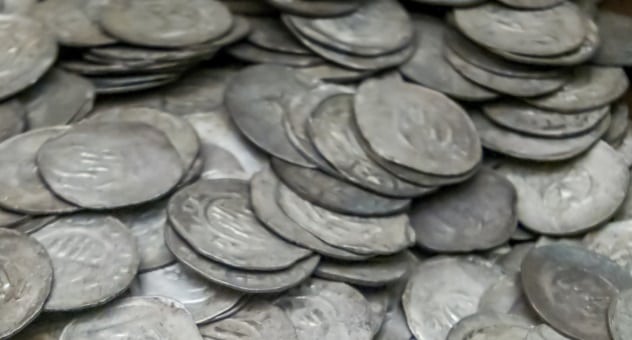
According to the writings of a Greek traveler from 60–57 BC, it cost one talent of silver, about 30 kilograms (66 lb), for the most expensive mummification.[1] This was during the Ptolemaic period of Egyptian history, when there was some conflict in the dynasty, which could have resulted in inflation.
The cost of the supplies of mummification today, including linen, sodium carbonate decahydrate (natron), resin, and incense, totals about $3,600. However, to be mummified today costs nearly $70,000, and various businesses actually mummify bodies of people as well as pets. Pet mummification can cost from $7,000 to over $100,000. In contrast, a funeral and burial in the United States in 2017 cost between $7,000 and $10,000 on average, and cremation cost around $1,000.
9 Medicinal Mummies
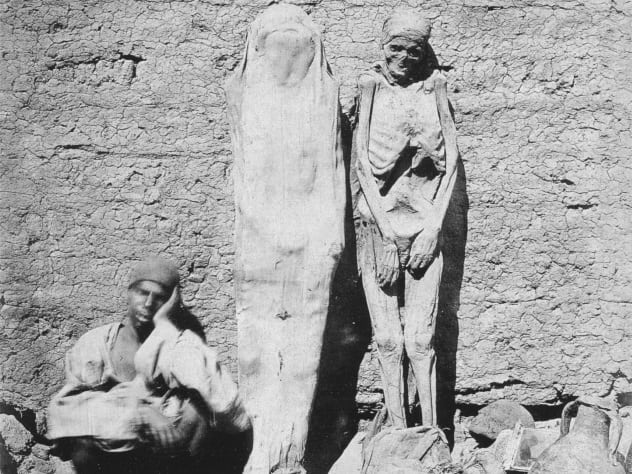
Mummies were used as medicine from AD 400 into the 19th century. The concept was based on the use of natural bitumen, which Europeans believed Egyptians were mummified with. This was entirely useless as medication, as ancient Egyptians used resin, which does mimic bitumen but has no health benefits.[2] In fact, the resin was probably better to consume than bitumen, which has been recently found to be carcinogenic.
In the Middle Ages, the rich would buy ground-up mummies to use as medicine, and the belief in mummies being medically beneficial continued into the 1800s. When mummies were too hard to acquire, dehydrated bodies of criminals were used instead.
Human remains were also ground up and mixed with honey to create a sweet medicinal syrup. On some occasions through history, people were mummified in honey (a process known as mellification) specifically for the purpose of being turned into this medicine, claimed to be able to cure any ailment. Historically, in some regions of the world, leaders and priests were mummified in coffins of honey, but without the intention of medicinal use.
8 Animal Mummies
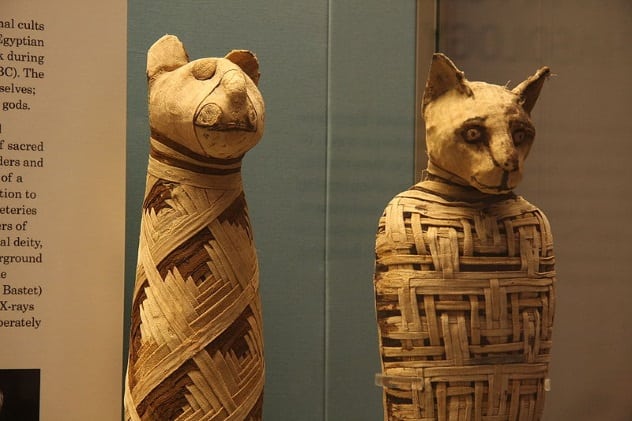
Egyptians raised animals to mummify them. While it’s true that Egyptians did mummify their pets, they also raised animals and killed them specifically for the purpose of mummification. These mummies were typically religious offerings, as Egyptian gods were linked to animals, and the animals were sometimes considered incarnations of the gods. For example, the goddess Bastet was related closely with cats. The animals were buried in coffins and tombs especially for the god or goddess they symbolized or were significant to.
Despite the vast amount animal mummies produced in ancient Egypt, care was taken in animal mummification, but it was not comparable to human mummification, which was incredibly elaborate and time-consuming. Most animal mummies were purchased by people making pilgrimages to temples for specific gods or goddesses. For a fee, priests would bury the animals in the graveyard of the temple as a form of homage to a god or goddess. Cats, baboons, fish, crocodiles, and bulls were among the animals that were mummified.[3]
7 Providing For The Afterlife
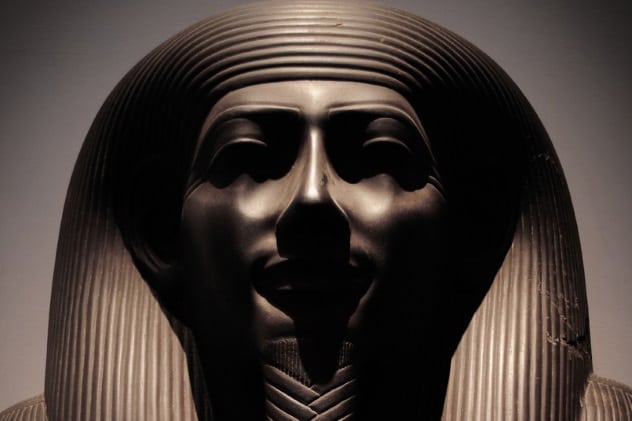
Mummification was arguably the most important aspect of ancient Egyptian religious practices. Ancient Egyptians believed that mummification was necessary to gain access to the afterlife. They believed that after someone died and was properly mummified, they would have use of their physical body during their journey, which is why they preserved the bodies of the deceased.[4]
Part of this journey was judgement by Osiris (the god of the afterlife) and 42 judges. Anubis, the god of mummification, would guide the deceased through their journey, and Thoth, the god of wisdom, weighed the soul of the deceased. The soul would also journey with Ra through the afterlife.
The religion of the ancient Egyptians was based around death and the afterlife. The increasingly elaborate practice of mummification actually became an important part of the economy of ancient Egypt, as mummies required the services of hairdressers and beauticians as well as craftsman to build sarcophagi, not to mention pyramids and less elaborate tombs.
6 Mummy Cosmetology
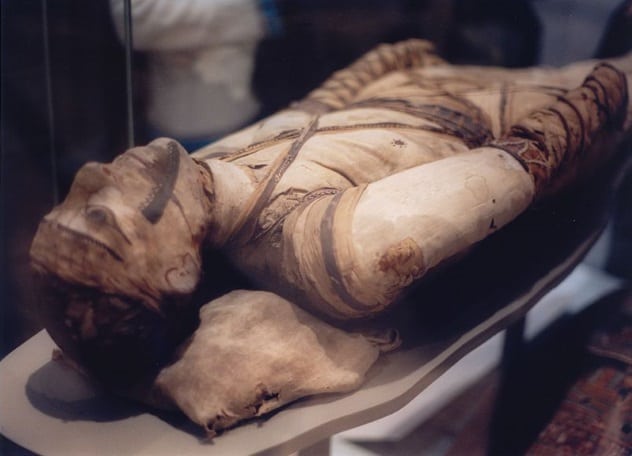
Mummies were heavily made up to look lifelike in addition to being preserved. During the mummification process, the bodies of mummies were colored. Men were colored red, and women were colored yellow. This began during the Third Intermediate Period. Mummies had fake eyes made of glass or stone in this period (small onions were used previously to create the illusion of eyes), and they often had wigs or yarn woven into their hair.[5] Mummies in the Late Period were decorated with gold leaf applied directly to the skin. Some forms of modern makeup take after ancient Egyptian makeup, including kohl, a charcoal-based eyeliner.
Ancient Egyptians even painted the nails of mummies for mummification with a form of henna. Henna use as tattoos was actually an Egyptian practice, before it was explored in India. Pharaoh Ramses I was found with his nails a deep orange color, indicative of the presence of henna or another dye. Beauticians were an important aspect of Egyptian culture and were considered to be close to the goddess Hathor. Wigs were another aspect of beauty in ancient Egypt that was integral in the typical mummification process. Wigs, however, were not only for the dead, as many Egyptians shaved their heads.
5 Natural Mummies
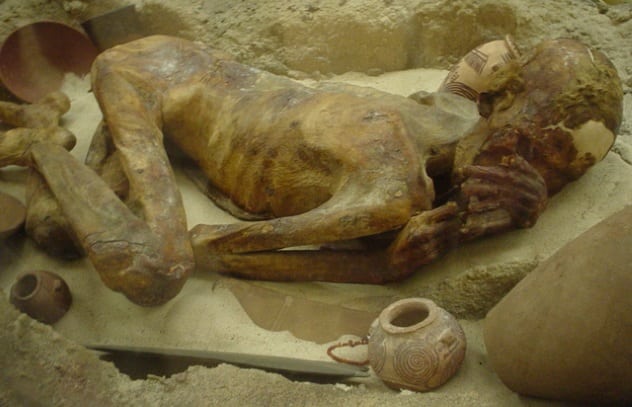
Ancient Egyptians didn’t start using elaborate mummification procedures until after the development of their early civilization. Initially, mummies were created naturally by the desert environment of Egypt.[6] The dead were buried in the sand, and the dry environment would preserve the bodies. Anthropologists believe that accidentally uncovered bodies which were naturally mummified in the sand, and thus recognizable years after death, encouraged the practice of mummification by demonstrating how through minimal decomposition, mummies have eternal life.
Once the Egyptians began to believe decay was unnatural, they began processes specifically to preserve the deceased, but it took 800 years for them to begin removing organs to prevent decay. In 3400 BC, Egyptians began wrapping mummies in linen, but only by 2600 BC did they consistently remove organs. It was only 5,500 years ago that mummies began being buried in tombs and sarcophagi.
Natural mummification still occurs in regions where bodies are not exposed to either air or moisture; corpses have been found preserved for hundreds and thousands of years in arid climates like the deserts of Egypt but also in tundras and submerged in bogs.
4 Arm Placement

The arm placement of mummies is actually significant. For example, arms crossed over the chest, the image most commonly associated with mummies, was very specifically used for royalty.
Predynastic mummies had their hands covering their face, with their arms bent at the elbows.[7] The Old and Middle Kingdoms were indicated by burial with hands at the sides or occasionally crossed over the pelvis. During the period of Ramses II, mummies were preserved with arms crossed over the lower body, and arms folded with hands on the shoulders are indicative of a later period of Egyptian history. Crossed arms as typically envisioned were used only in the New Kingdom for males of royal status.
3 Cheaper Options

In ancient Egypt, lower classes could generally only afford an incomplete mummification. This wouldn’t include a coffin or sarcophagus and typically would solely involve dehydrating the body, with some or all organs remaining intact. Brains were considered the least important in ancient Egypt and were therefore the least important to remove. Early mummification and incomplete mummification frequently leaves the brain intact, which is indicated by an intact nose.[8]
Sometimes, the very poor would only wrap the deceased in cloth and bury them in the desert sand for a few days or weeks to dry them. Then, the body cavities would be washed with solvent, and the cadaver would be buried in a cemetery. In contrast, tombs of the rich and royal were elaborately painted with inscriptions from the Book of the Dead, the Pyramid Texts, and the Coffin Texts. The divide between the rich and poor in ancient Egypt is particularly evident in burial practices.
2 Canopic Jars
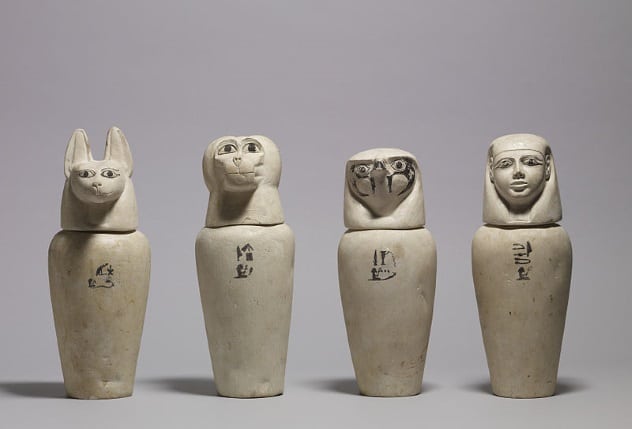
Ancient Egyptians considered the lungs, liver, stomach, and intestines to be the most important in mummification. They were extracted from bodies and kept in canopic jars, which were based on four ancient Egyptian gods that were believed to guard the organs for the deceased, the four sons of Horus. Each canopic jar had a different head, one of a baboon, one of a jackal, one of a human, and one of a falcon.[9]
It is likely that, initially, the organs were removed because their presence caused the body of the deceased to decompose more quickly. Over time, this practice religiously evolved into the belief that the organs were needed by the deceased in their journey through the afterlife.
1 The Curse Of The Mummy
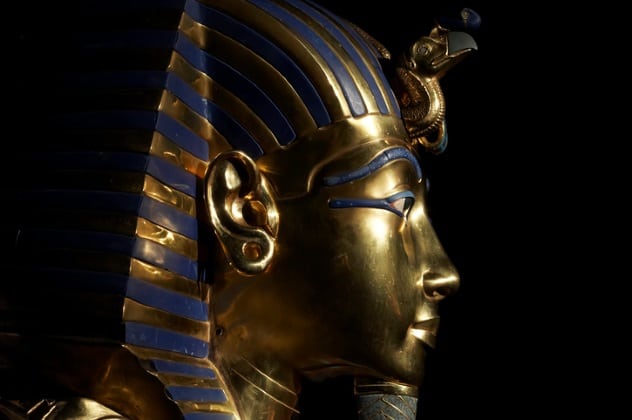
The concept of cursed mummies or tombs wasn’t invented by the Egyptians but rather by sensationalist writing. The only basis of these curses are threats written on tombs of divine retribution for disrespecting the dead, for the express purpose of discouraging tomb robbers. Though some mummies did preserve ancient mold, scientists have determined the mold is not dangerous.[10]
Written warnings against opening Egyptian tombs date back to the Middle Ages and describe the evil and supernatural qualities possessed by the mummies. The most famous purported curse is that of King Tutankhamun’s tomb, or the curse of the Pharaoh. The financier of the excavation of Tutankhamun’s tomb died from a mosquito-borne illness, and Howard Carter, who discovered the tomb, died 16 years later. The idea of a curse was circulated by fiction author Sir Arthur Conan Doyle. On that note, Shakespeare also had a form of a curse on his grave to deter disturbance by grave robbers.
+ Non-Egyptian Mummies
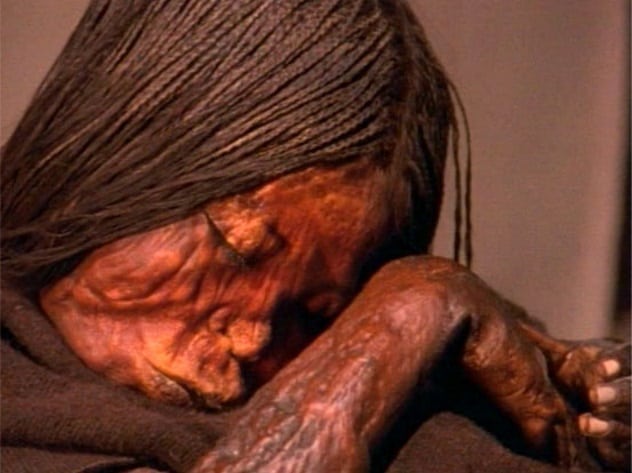
The ancient Egyptians didn’t invent mummification and were not by any account the first ancient civilization to mummify their dead. Mummified bodies have been found all over the world, dating to thousands of years prior to those found in Egypt. Though stereotypically Egyptian in Hollywood, mummification became a common practice in South America starting around 6000 BC. The famous painting The Scream has been attributed to a Peruvian mummy that Edvard Munch saw in a museum.
Ice mummies are another example of South American mummification. In the Inca culture, human sacrifices left on mountaintops became essentially freeze-dried, preserving the body. In North America and Europe, accidental freezing resulted in ice mummies as well, many from the Iron Age. Though popularly considered Egyptian, mummies originate from all over the world.[11]
Abigail Hentschke has primarily published poetry, including poems for Eber and Wein publishing company and Canvas Literary Journal.
Read more mummy-related facts on Top 10 Remarkable Moments Involving Mummies and 10 Mummies With Mysterious Stories To Tell.








